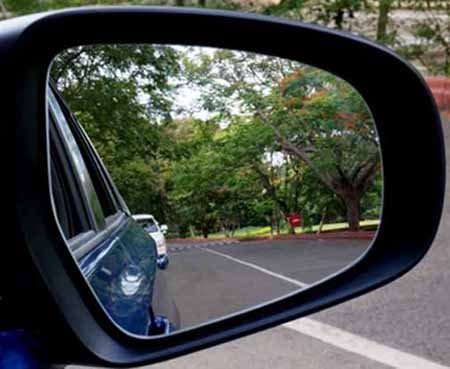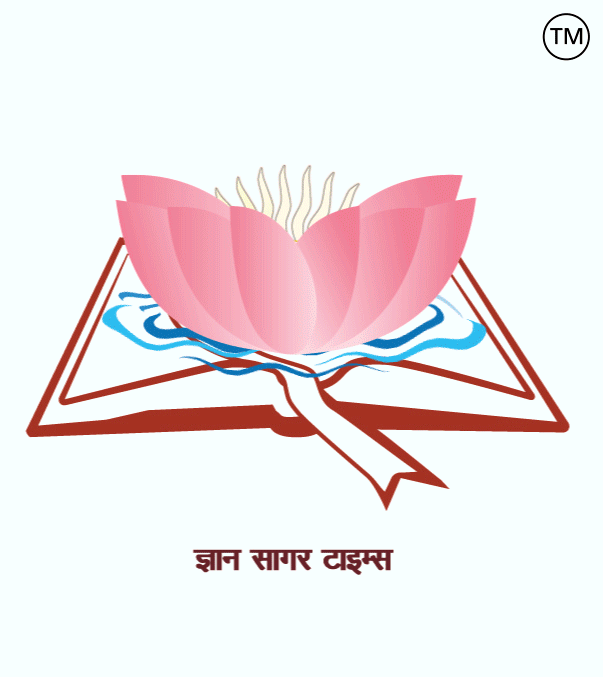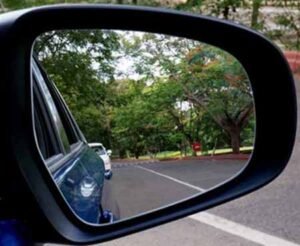
Related to Physics- 198.
|
1. The sun appears red at sunrise and sunset because? = Due to scattering of light. 2. The imaginary line that falls on the spherical mirror passing through the focus and pole is called? = Principal Axis. 3. If the focus of an object falls on a concave mirror, what will be its shadow? = The image is formed at infinity and is highly magnified (large). 4. Two plane mirrors are inclined to each other at an angle of 60°. What will be the number of images formed of a ball placed between them? = 05 images will be formed. 5. A person suffering from farsightedness? = cannot see nearby objects. 6. Which lens is used in the spectacles of a person suffering from farsightedness? = Convex lens. 7. Which lens is used in the spectacles of a person suffering from nearsightedness? = Concave Lens. 8. If the size of letters appears smaller through a lens, then the lens? = Concave lens. 9. What is the unit of power of a lens? = Dioptre. 10. A person is standing on a rotating stool with his arms outstretched, and suddenly he contracts his arms; then the angular velocity of the stool is? = will increase. 11. When a body resists any change in its state of rest or uniform motion in a straight line, it is called? = Inertia. 12. Which unit has the same quantity in all systems? = Unit of time (second). 13. The fluctuations in the frequency of a sound source are called? = Doppler effect. 14. The number of vibrations a particle makes in one second is called? = Frequency. 15. Liquid passes equal pressure in all directions. This statement is related to which law? = Pascal’s law. 16. On which principle does a ball pen work? = It works on the principle of capillarity and surface tension. 17. Reason for water drops being round? = Surface Tension. 18. A thermocouple thermometer is based on which principle? = Based on the principle of the Seebeck effect. 19. The motion of a body around a circular path is an example of? = Uniform circular motion. 20. What is the capacity to do work called? = Energy. 21. What is the splitting of white light into different colours called? = Dispersion of light. 22. On which principle does the periscope work? = Works on the principle of reflection of light. 23. When ice cubes are pressed together, they stick together because? = Due to high pressure, the melting point of ice decreases. 24. The speed of sound will be highest in? = Solids. 25. What is used as the core in an electromagnet? = Soft iron. 26. What is used to measure high temperature? = Pyrometer. 27. Where is a nuclear pile used? = To conduct nuclear fission. 28. Where do stars get their energy from? = Nuclear fusion. 29. What is the product of an object’s mass and its velocity called? = Momentum. 30. When momentum is doubled, the kinetic energy becomes? = Four times.
============== ======== ==== ============== भौतकी से संबंधित-198. 1. उगते व डूबते समय सूर्य लाल प्रतीत होता है, क्योंकि? = प्रकाश के प्रकीर्णन के कारण. 2. वह काल्पनिक रेखा जो फ़ोकस एवं पोल से गुजरते हुए गोलकार दर्पण पर पड़ती है, वह कहलाती है? = मुख्य अक्ष (Principal Axis). 3. अगर किसी वस्तु का फ़ोकस अवतल दर्पण पर पड़ता है, तो उसकी छाया कैसी बनेगी? = प्रतिबिंब अनंत पर बनता है और अत्यधिक आवर्धित (बड़ा) होता है. 4. दो समतल दर्पण एक-दूसरे से 60° के कोण पर झुके हैं. इनके बीच रखी एक गेंद के बने प्रतिबिम्बों की संख्या कितनी होगी? = 05 प्रतिबिंब बनेंगे. 5. दूर दृष्टि दोष से पीड़ित व्यक्ति को? = निकट की वस्तुएँ दिखाई नहीं देती. 6. दूर दृष्टि दोष से पीड़ित व्यक्ति के चश्मे में कौन-सा लेंस प्रयोग किया जाता है? = उत्तल लेंस (Convex lens). 7. निकट दृष्टि दोष से पीड़ित व्यक्ति के चश्मे में कौन-सा लेंस प्रयोग किया जाता है? = अवतल लेंस (Concave Lens). 8. यदि किसी लेंस से अक्षरों का आकार छोटा दिखाई देता हैं, तो लेंस? = अवतल लेंस. 9. लेंस की क्षमता का मात्रक क्या है? = डायोप्टर (Dioptre). 10. एक व्यक्ति घूमते हुए स्टूल पर बांहें फैलाये खड़ा है और अचानक अपनी बांहें सिकोड़ लेता है, तो स्टूल का कोणीय वेग? = बढ़ जायेगा. 11. जब कोई पिण्ड सीधी रेखा में विराम या एक समान गति की स्थिति में किसी भी परिवर्तन का विरोध करता है उसे कहते हैं? = जड़त्व (Inertia). 12. समस्त व्यवस्थाओं में किस इकाई की मात्रा समान होती है? = समय की इकाई (सेकंड). 13. किसी ध्वनि स्रोत की आवृत्ति में होने वाले उतार-चढ़ाव को कहते हैं? = डाप्लर प्रभाव. 14. कोई कण एक सेकेण्ड में जितने कम्पन करता है, उस संख्या को कहते हैं? = आवृति. 15. द्रव सभी दिशाओं में समान दाब पारित करता है, यह कथन किस नियम से सम्बंधित है? = पास्कल का नियम. 16. बाल पेन किस सिद्धांत पर काम करता है? = केशिकत्व और पृष्ठ तनाव के सिद्धांत पर काम करता है. 17. पानी की बूंदों के गोल होने का कारण? = पृष्ठ तनाव. 18. ताप युग्म तापमापी किस सिद्धांत पर आधारित है? = सीबेक प्रभाव के सिद्धांत पर आधारित है. 19. वृत्ताकार पथ के चारों ओर पिंड की गति किसका उदाहरण है? = समान वृत्तीय गति. 20. कार्य करने की क्षमता को क्या कहते हैं? = ऊर्जा. 21. श्वेत प्रकाश को विभिन्न रंगों में विभाजित होना क्या कहलाता है? = प्रकाश का वर्ण-विक्षेपण. 22. पेरिस्कोप किस सिद्धांत पर कार्य करता है? = प्रकाश के परावर्तन के सिद्धांत पर काम करता है. 23. बर्फ़ के टुकड़ों को आपस में दबाने पर टुकड़े आपस में चिपक जाते हैं, क्योंकि? = दाब अधिक होने से बर्फ़ का गलनांक घट जाता है. 24. ध्वनि की चाल सबसे अधिक होगी? = ठोस पदार्थों में. 25. विद्युत चुम्बक में क्रोड के रूप में किसका इस्तेमाल होता है? = नरम लोहे. 26. उच्च तापमान नापने के लिए किसे प्रयोग में लाया जाता है? = पायरोमीटर. 27. परमाणु पाइल का उपयोग कहां होता है? = परमाणु विखंडन के संचालन के लिए. 28. तारे अपनी ऊर्जा कहां से प्राप्त करते हैं? = परमाणु संलयन (nuclear fusion). 29. किसी वस्तु के द्रव्यमान और उसके वेग के गुणनफल को कहते हैं? = संवेग (Momentum). 30. संवेग दुगना होने पर गतिज ऊर्जा हो जाती है? = चार गुना.
|






